| Title | Patients with ALS can use sensorimotor rhythms to operate a brain-computer interface. |
| Publication Type | Journal Article |
| Year of Publication | 2005 |
| Authors | Kübler, A, Nijboer, F, Mellinger, J, Vaughan, TM, Pawelzik, H, Schalk, G, McFarland, DJ, Birbaumer, N, Wolpaw, J |
| Journal | Neurology |
| Volume | 64 |
| Issue | 10 |
| Pagination | 1775-7 |
| Date Published | 05/2005 |
| ISSN | 1526-632X |
| Keywords | Aged, Amyotrophic Lateral Sclerosis, Electroencephalography, Evoked Potentials, Motor, Evoked Potentials, Somatosensory, Female, Humans, Imagination, Male, Middle Aged, Motor Cortex, Movement, Paralysis, Photic Stimulation, Prostheses and Implants, Somatosensory Cortex, Treatment Outcome, User-Computer Interface |
| Abstract | People with severe motor disabilities can maintain an acceptable quality of life if they can communicate. Brain-computer interfaces (BCIs), which do not depend on muscle control, can provide communication. Four people severely disabled by ALS learned to operate a BCI with EEG rhythms recorded over sensorimotor cortex. These results suggest that a sensorimotor rhythm-based BCI could help maintain quality of life for people with ALS. |
| URL | http://www.ncbi.nlm.nih.gov/pubmed/15911809 |
| DOI | 10.1212/01.WNL.0000158616.43002.6D |
| Alternate Journal | Neurology |
| PubMed ID | 15911809 |

